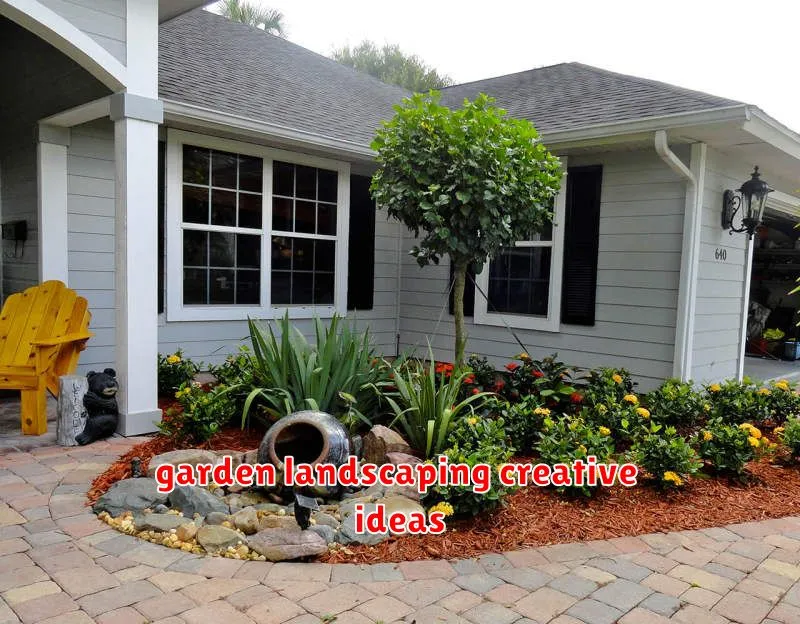Transform your outdoor space into a captivating haven with our creative garden landscaping ideas. Whether you’re dreaming of a vibrant flower garden, a serene water feature, or a sophisticated modern landscape design, we offer a wealth of inspiration to elevate your home landscaping. Discover innovative techniques for small garden design, clever solutions for maximizing yard space, and the latest trends in outdoor design to create the perfect garden tailored to your unique style and needs. Explore diverse landscaping styles, from rustic charm to minimalist elegance, and unleash your creativity with our comprehensive guide to creative garden landscaping.
Vertical Garden Walls
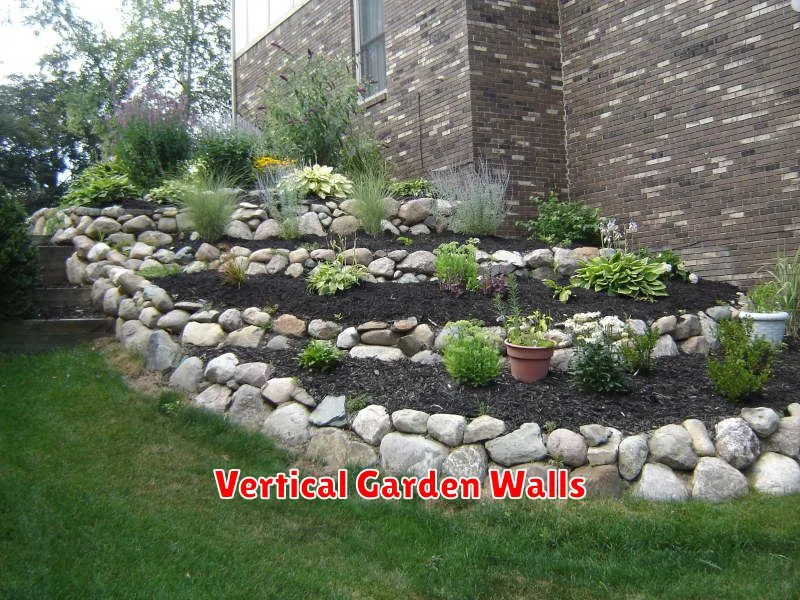
Vertical garden walls offer a unique and space-saving solution for incorporating greenery into any landscape. They are particularly beneficial for smaller gardens or areas with limited ground space. These walls can be constructed from a variety of materials, including wood, metal, or recycled pallets, and can be customized to fit any aesthetic.
Planting choices for vertical gardens are diverse, ranging from flowering vines and herbs to leafy greens and succulents. Careful consideration should be given to sun exposure and the water requirements of chosen plants. A well-designed irrigation system is crucial for maintaining a thriving vertical garden, especially during warmer months.
Beyond their aesthetic appeal, vertical gardens provide several environmental benefits. They can help improve air quality, reduce noise pollution, and offer a habitat for beneficial insects. Furthermore, they can contribute to a cooler microclimate, particularly in urban settings, by providing shade and evaporative cooling.
Solar-Powered Garden Lights
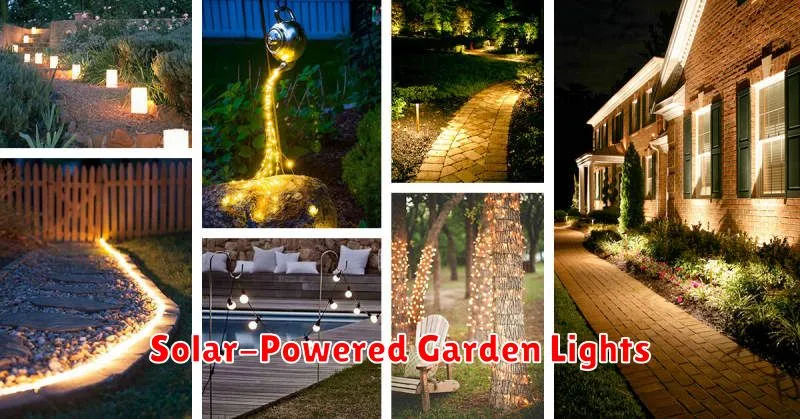
Solar-powered garden lights offer a creative and eco-friendly way to illuminate your outdoor space. These lights harness the sun’s energy throughout the day, eliminating the need for electrical wiring and reducing your carbon footprint. They provide a soft, ambient glow, perfect for highlighting pathways, borders, or focal points in your garden.
The versatility of solar garden lights is a key advantage. They come in a wide array of styles, from classic lanterns to modern sleek designs, allowing for seamless integration with any landscaping theme. Furthermore, their low maintenance requirements make them an ideal choice for busy homeowners. Simply place them in a sunny location, and they’ll automatically illuminate at dusk.
Consider factors such as brightness, battery life, and design when selecting solar garden lights. Choosing lights with a high lumen output will ensure sufficient illumination. A longer battery life reduces the frequency of recharging, while the design should complement your existing garden aesthetic. With careful planning, solar-powered garden lights can significantly enhance the beauty and ambiance of your outdoor landscape.
Stone Pathway Designs
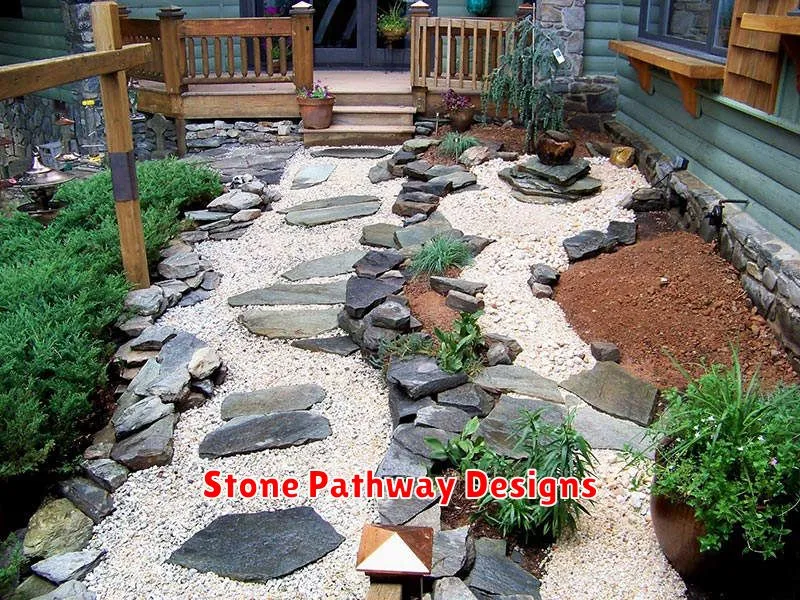
Stone pathways offer a versatile and aesthetically pleasing addition to any garden landscape. Their durability and natural beauty enhance the overall design, providing both functional walkways and attractive visual elements. Choosing the right stone type, such as flagstone, slate, or cobblestone, depends on the desired aesthetic and the existing garden style. Consider the size and shape of the stones, as well as the pathway’s intended use, to create a cohesive and practical design.
Design considerations extend beyond stone selection. The pathway’s layout plays a crucial role in its visual impact. Curving paths create a sense of exploration and can highlight garden features, while straight paths provide a more formal and structured feel. Integrating the pathway with the surrounding landscape, perhaps by using plants as borders or incorporating the pathway into existing features, ensures a seamless and natural look. The width of the path should also be carefully considered, ensuring sufficient space for comfortable passage.
Beyond functionality, creative stone pathway designs can elevate the garden’s overall appeal. Incorporating varied stone sizes and colors adds visual interest, while patterns and mosaics can inject unique personality. The use of edging materials, such as wood or metal, can further enhance the pathway’s design and define its boundaries. Ultimately, the best stone pathway design is one that complements the existing landscape and reflects the homeowner’s personal style and preferences.
Raised Vegetable Beds

Raised vegetable beds offer a multitude of benefits for gardeners. They provide excellent drainage, improving soil aeration and reducing the risk of root rot. This is particularly advantageous in areas with heavy clay soils or poor drainage. Furthermore, raised beds allow for earlier planting in the spring as the soil warms up more quickly than the surrounding ground.
The construction of raised beds is adaptable to various materials and budgets. Common options include untreated lumber, stone, brick, or even recycled materials. The height and dimensions can be customized to suit individual needs and preferences, maximizing space efficiency and ease of access for tending plants. Careful consideration should be given to soil selection and preparation to ensure optimal plant growth.
Beyond the practical advantages, raised beds contribute significantly to the aesthetic appeal of a garden. They create defined planting areas, allowing for creative designs and the integration of diverse plants and textures. Well-maintained raised beds add a sense of order and sophistication, enhancing the overall landscaping design. The versatility of raised beds makes them an excellent choice for both experienced gardeners and beginners.
Water Features for Relaxation
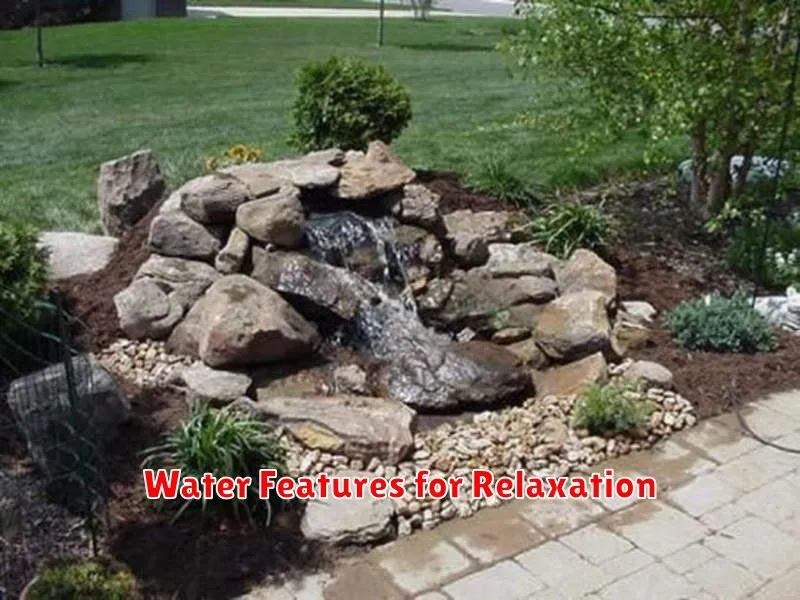
Incorporating water features into your garden design offers a multitude of benefits, primarily contributing to a serene and relaxing atmosphere. The gentle sounds of trickling water, whether from a fountain, pond, or stream, have a naturally calming effect, masking unwanted noise and promoting a sense of tranquility. The visual appeal of water, especially when combined with strategically placed plants and lighting, further enhances the aesthetic beauty of your outdoor space, creating a peaceful oasis for relaxation and contemplation.
The choice of water feature depends largely on your garden’s size and style. A small, elegant fountain might be ideal for a compact garden, while a larger pond with aquatic plants could be a focal point in a more expansive landscape. Consider the maintenance involved; some features require more upkeep than others. Regardless of size, the soothing presence of water significantly improves the overall ambiance, making your garden a more inviting and relaxing retreat.
Beyond the aesthetic and acoustic benefits, water features can also boost biodiversity. A pond, for instance, can attract beneficial insects and birds, adding a vibrant element to your garden ecosystem. The strategic placement of water features is crucial; consider the sun’s path and surrounding vegetation to maximize their visual impact and create a harmonious integration with your overall garden design. Careful planning ensures the water feature becomes a truly tranquil and enjoyable addition to your outdoor space.
Herb Spiral Planters
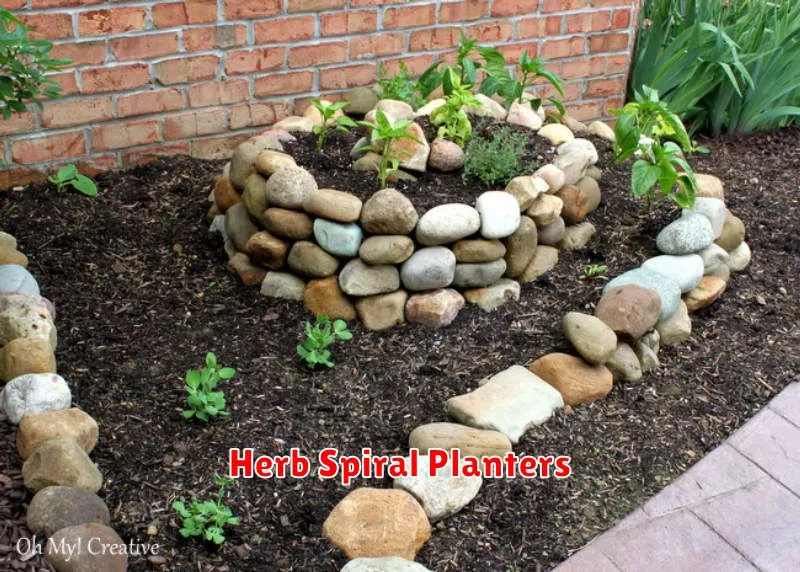
Herb spiral planters offer a space-saving and visually appealing solution for cultivating a variety of herbs. Their design, typically a coiled structure built from stone, brick, or wood, allows for the creation of microclimates and optimizes sunlight exposure for different herbs with varying needs. This vertical gardening technique maximizes space utilization, making it perfect for smaller gardens or patios.
The spiral design facilitates efficient watering, as water naturally trickles down through the levels. Furthermore, the varied sun exposure across the levels caters to the diverse sunlight requirements of various herbs, allowing you to grow a wider range of species successfully. Careful planning of plant placement is key to maximizing this advantage.
Constructing a herb spiral planter can be a rewarding DIY project, or readily available pre-fabricated options can be purchased. Regardless of construction method, regular maintenance including watering and weeding, will ensure a thriving and productive herb garden. The visual appeal of a well-maintained herb spiral adds a unique and attractive feature to any garden landscape.
DIY Compost Stations
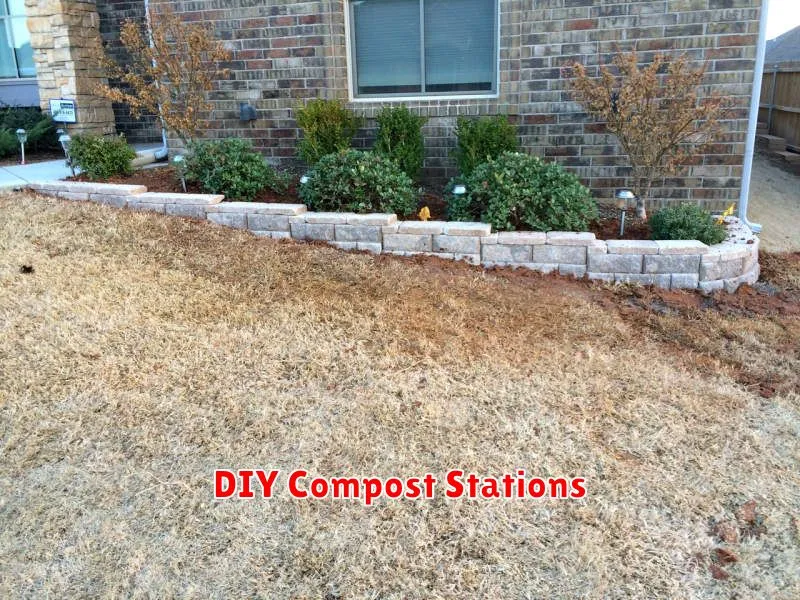
Creating a DIY compost station is a fantastic way to enhance your garden landscaping while promoting sustainability. There are numerous designs to choose from, ranging from simple bins constructed from readily available materials like pallets or repurposed barrels to more elaborate, multi-chambered systems. The key is to select a design that aligns with your available space and composting needs.
Effective composting requires careful consideration of several factors. Proper aeration is crucial for decomposition; ensure your chosen design facilitates airflow. Maintaining a balanced carbon-to-nitrogen ratio is also vital for successful composting. This balance can be achieved by layering “brown” materials (e.g., dried leaves, twigs) with “green” materials (e.g., grass clippings, fruit scraps). Regular turning of the compost pile helps to speed up the decomposition process.
Beyond the environmental benefits, a well-designed compost station can become a beautiful and functional addition to your landscape. Strategically placed, it can blend seamlessly with the overall garden aesthetic. Consider using natural materials, such as untreated wood or stone, to create a visually appealing and cohesive design. The finished compost will enrich your soil, leading to healthier, more vibrant plants.
Decorative Garden Fountains
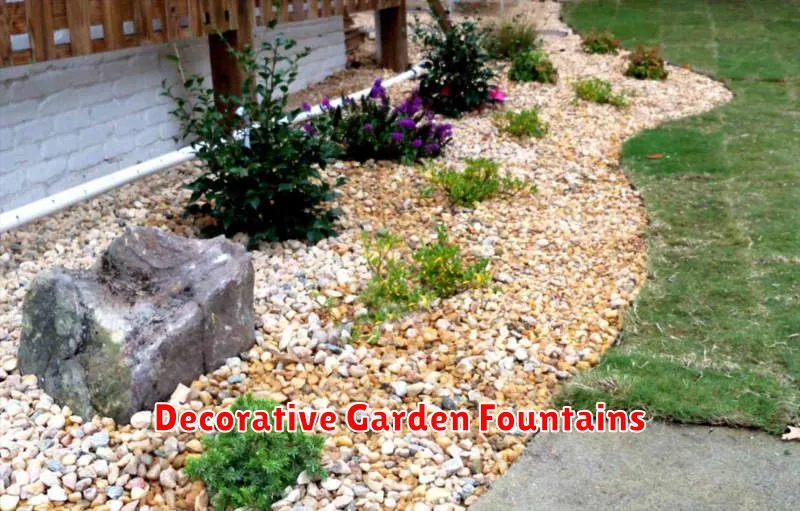
Decorative garden fountains offer a sophisticated and elegant addition to any landscape design. They provide a focal point, enhancing the aesthetic appeal of your garden with their visual beauty and the soothing sound of flowing water. The range of styles available is vast, from classic and traditional designs to modern and minimalist options, allowing for seamless integration with diverse landscaping themes.
Choosing the right fountain depends on several factors. Size and scale are crucial, ensuring the fountain complements, rather than overwhelms, the surrounding space. Consider the materials used—stone, metal, or resin—and how they harmonize with existing elements such as pathways, patios, and plant life. The style of the fountain should also reflect the overall garden design, creating a cohesive and visually pleasing effect.
Beyond their aesthetic value, fountains provide practical benefits. The sound of water can mask unwanted noises, creating a peaceful ambiance. The gentle mist produced by some fountains can also help to humidify the surrounding air, beneficial for certain plants. Proper placement and maintenance are key to maximizing both the visual and functional advantages of your garden fountain.
Hanging Flower Baskets
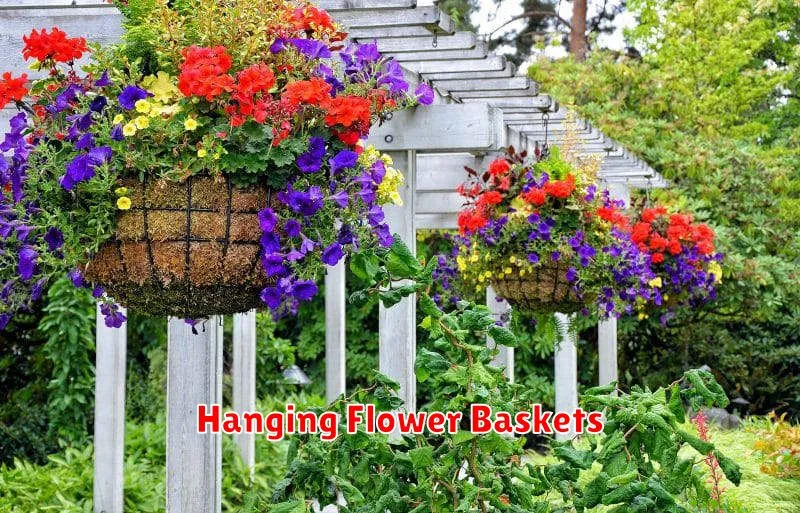
Hanging flower baskets offer a versatile and visually appealing way to enhance your garden landscaping. They provide a three-dimensional element, adding height and texture to otherwise flat areas. The variety of plants suitable for hanging baskets is vast, allowing for creative combinations of color, shape, and bloom time.
Consider the location when choosing plants. South-facing baskets will require sun-tolerant varieties, while north-facing baskets may benefit from shade-loving plants. Proper watering is crucial; self-watering baskets can alleviate some of this concern. Regular deadheading will encourage continued blooming.
Beyond aesthetics, hanging baskets can serve a practical purpose. They can soften harsh architectural lines, camouflage unsightly areas, or even provide a fragrant addition to a patio or deck. With careful planning and selection, hanging baskets can be a stunning and functional addition to any garden design.
Weather-Resistant Outdoor Furniture

Choosing the right outdoor furniture is crucial for enjoying your garden year-round. Weather-resistant materials are key to ensuring longevity and minimizing maintenance. Popular options include polypropylene, known for its durability and resistance to fading, and powder-coated aluminum, offering strength and a sleek finish that withstands harsh weather conditions. Consider the specific climate in your region when making your selection.
Beyond the material, consider the design and construction. Look for furniture with robust frames and weatherproof cushions. Features such as drainage holes in cushions and tightly woven wicker can prevent water damage and mildew. Investing in high-quality, weather-resistant pieces will prevent premature deterioration and allow you to fully enjoy your outdoor space.
Remember to properly maintain your furniture to extend its lifespan. Regular cleaning with mild soap and water and occasional applications of protective sealant will safeguard your investment. With careful selection and maintenance, your weather-resistant outdoor furniture will provide years of comfortable and stylish enjoyment in your beautifully landscaped garden.

